Noisy Decent Graphics
A series of blog posts by Ben Terrett about me | archives | atom feed
Nov 30, 2006
THIRTY
Posted at 20:45 in Type Painted onto Walls / Stuff, Typography | Permalink | Comments (0) | TrackBack (0)
Nov 22, 2006
What should I do with these?
One of the things that struck me about Alan Fletcher was the fact that he actually did stuff. I'm sure millions of designers have collections of letters but very few would actually make them into something.
So, inspired by this I'm going to do more things with all the stuff I've collected over the years.
For example I've got all these photos.
They're all of typography, mainly signs. I've always wanted to turn them into a book or something. I haven't added to the collection for a few years, so when I look back now they were mainly taken between 1998 and 2003. Australia, Spain, France, UK, San Francisco, Vegas, Colorado, Chicago, New York, New Orleans, Memphis and Monaco are the locations.
So what should I do? A book? A series of posters? An exhibition?
What do you reckon listeners?
Posted at 19:04 in Seen and heard, Type Painted onto Walls / Stuff, Typography | Permalink | Comments (17) | TrackBack (0)
Nov 21, 2006
The Times gets a new masthead and a new fount
The Times has given itself a new masthead and a new headline font, art directed by Neville Brody.
You can read about the history of their headline font here.
Strangely, in the article they don't use the word font once. They say 'fount' throughout the whole article.
To check I wasn't being ignorant I looked 'fount' up in the dictionary. Here's what it says, "The English spelling (c. 1980) of the once Americanized (1828) and now ubiquitous 'font'.". I never knew that. Did you?
They've used fount 8 times in the article. Are they being clever dicks? Are they correct? What's going on there?
By clicking here you can see a history of the masthead design. There are 20 in all, over 221 years. This post brought to you via Design Observer.
Posted at 19:41 in Graphic Design Reviews , Stuff I'm Reading, Things I've Learnt About Design, Typography | Permalink | Comments (2) | TrackBack (0)
Nov 15, 2006
Neon
Posted at 07:33 in Type Painted onto Walls / Stuff, Typography | Permalink | Comments (0) | TrackBack (0)
Nov 10, 2006
Very nice signage down at the ICA
Posted at 10:12 in Graphic Design Reviews , Seen and heard, Typography | Permalink | Comments (0) | TrackBack (0)
Nov 08, 2006
Bountiful Cow
Posted at 16:50 in Seen and heard, Typography | Permalink | Comments (0) | TrackBack (0)
Nov 07, 2006
SoftLightes typographic video
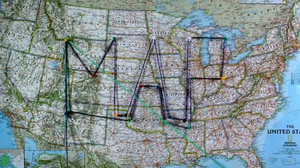
There is a band called the SoftLightes and together with Kris Moyes they have made a lovely, gorgeous, typographic video. Song's decent as well.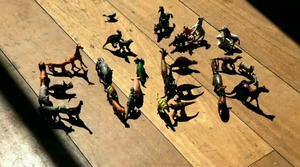
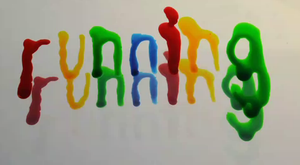
It's one of those things that you'll wish you made. Watch the video here.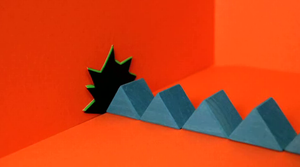
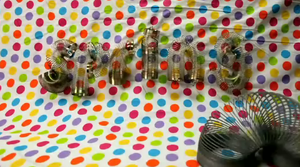
Found via Design Observer which is peaking at the moment.
Posted at 09:38 in Typography, Videos | Permalink | Comments (0) | TrackBack (0)
Oct 29, 2006
Web design is 95% typography
There is a brilliant article on web typography over at Information Architects. Probably the best thing I've ever read about web design.
Via MB at Design Observer.
Posted at 15:25 in Stuff I'm Reading, Typography | Permalink | Comments (1) | TrackBack (0)
Oct 25, 2006
Bloody brilliant
From viaLetter. Buy some.
Posted at 15:58 in Seen and heard, Type Painted onto Walls / Stuff, Typography | Permalink | Comments (0) | TrackBack (0)
Oct 08, 2006
The Story Of A Blog Post
I've spent the last couple of hours trying to collate the information I need to finish a post I'd like to write.
Except that I haven't found what I was looking for, instead I've found a whole bunch of really interesting stuff that only hangs together by the fact that I stumbled across it all one autumnal evening.
So to share all this with you, I'm going to bundle it all up in a little package called 'The Story Of A Blog Post'.
On Saturday we went to see Thomas.
It was brilliant, of course, really good fun and exactly the kind of thing you should be doing at the weekend.
And because I have the graphic design disease (more about that later) I kept spotting things like this:
Which reminded me of several things. How brilliant British information design is and was.
How nice it is when people bother to lovingly paint type and how nice some of the British Rail graphics used to be. This got me thinking about the British Rail train identification system that won loads of awards and they always used to go on about when I was at college. It looked like this:
I remember that it came in a big, big corporate identity manual in the days when big, big corporate identity manuals were de rigour. And because I've also got the blogging disease I instantly thought, 'ah ha blog post!' Hence my quest to find more information about this graphic information system.
First off I found this:
Which was designed by Design Research Unit who started trading in 1943 and in 2004 merged with Scott Brownrigg. That's a hell of a long time for a design company to be around. Most of them go to the wall within 3 years. DRU also designed a generic wayfinding signage manual for train stations in 2000, which in turn is remarkable as they were also asked to do one in the 60's.
I've always really liked this symbol. It's graphic, simple, elegant. It's got movement, it has two arrows, it looks like train tracks. It does the job of a logo well. No complaints.
Which of these is the correct version?
It's the first one. The top arrow points left because trains always keep to the left.
On the logo for Sealink the symbol is reversed because it looks like an S. Interesting eh?
Next up I stumbled across this:
Did you know that in the 1970's British Rail actually designed and patented a design for a flying saucer?
The flying saucer originally started as a proposal for a raiseable platform. However, the project was revised and edited, and by the time the patent was filed had become a large passenger craft for interplanetary travel. It was to be nuclear fusion powered, utilising laser beams to produce pulses of nuclear energy in a generator in the centre of the craft. Pardon my language, but how fucking brilliant is that? You don't get that under privatisation.
Then I rediscovered Jock Kinneir & Margaret Calvert. Two brilliant designers who designed the current signage on Britain's roads in the mid 60s.
At the start of the 60s, determined to illustrate the haphazard state of British road signage a chap called Herbert Spencer drove from central London to the recently opened Heathrow London Airport and photographed each of the road signs that he came across along the way.
He then published the result in two photographic essays in a magazine called Typographica. This provoked the government to redesign the system. It ain't that simple these days.
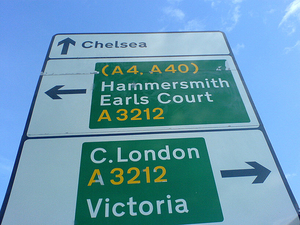
(Picture taken from Gaetan Lee with huge thanks, usual stuff applies.)
The British system is now copied round the world as was pointed out to me the other week by a colleague who's just returned from Dubai.
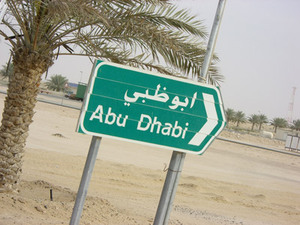
(Picture taken from Greg Valiquette with huge thanks, usual stuff applies. Greg isn't my colleague by the way.)
Next up this random list of links about design.
Just hundreds of interesting design links.
Then the web took me on a visit to the National Rail Museum in York. I've been there in real life to talk about a project that sadly never happened. It's an absolute treasure of graphics, posters and signs. They even have a real sign for Platform 9 3/4.
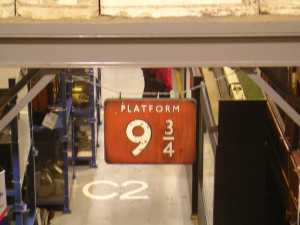
(Picture taken from Neil T with huge thanks, usual stuff applies.)
It's better than this one.
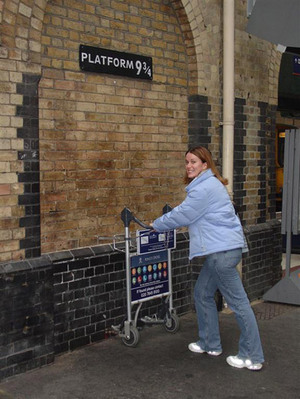
(Picture taken from Steve and Brooke with huge thanks, usual stuff applies.)
Although that one is brilliant too.
Look at this stuff.
Isn't it brilliant? Even this is good.
Last and by no means least I found this.
A typographic walk through London by Phil Baines.
I must do one of those myself, one day.
Still no info about the British Rail train identification system that won loads of awards and they always used to go on about when I was at college, but isn't the web the best thing ever?
Posted at 21:14 in Graphic Design Reviews , Seen and heard, Typography | Permalink | Comments (12) | TrackBack (0)
Sep 06, 2006
Some letters I saw today
We're in the market for some new furniture at the moment, so today we wandered around some shops. Right outside our office I saw this old type manual in a pile of rubbish.
Then in the fabulous new Habitat store on Regent Street we saw this.
Right in the window are some huge 3D letters. Lovely stuff. It's a only a guess but I reckon either Graphic Thought Facility or NB Studio did this.
Inside the store they have these huge letters everywhere. I think they might spell Habitat if you got them all together. Looks great.
Posted at 19:53 in Seen and heard, Typography | Permalink | Comments (0) | TrackBack (0)
Tags: big type, habitat
Helvetica vs Arial
Following on from yesterdays post about Helvetica here's a quiz to determine whether you can tell the difference between Helvetica and Arial.
Posted at 10:14 in Graphic Design Industry Stuff, Typography | Permalink | Comments (2) | TrackBack (0)
Tags: arial, helvetica
Sep 05, 2006
We heart Helvetica
All designers love Helvetica*, it's the ultimate typeface. That's a cliché but it's true.
Why do they love Helvetica so much? It's beautifully cut, it's elegant and it almost always looks great. It looks great big. it looks lovely small and it's easy to read. Please, please don't get Helvetica confused with Arial. Please don't do that. Arial is not a real font. Let me explain.
In the old days (before the Mac) fonts were designed to be cut out of chunks of metal and printed onto think paper sheets. Paper, that's the key word there. Then the computer came along and another application for fonts was invented, the screen. You see, you read differently on screen to how you read on paper. Text that's printed onto paper is made of ink and ink smudges (even though you can't see it, it does) and print consists of millions of dots, 300 per inch usually. Text on a screen is backlit and made of pixels, normally 72 per inch.
All this means that a font that's designed for print may not necessarily work on screen. Most do, but not all. That's why in the 90's loads of fonts were designed for the screen only. Arial started out like this. It also gets round all the licensing issues (ie the cost per user) involved with getting Helvetica for 3,000 employees.
On a Mac screen fonts are easy to spot because they're all named after cities, Chicago, Geneva etc. So please don't use screen fonts for printing. And if you feel like using Arial, try Helvetica instead. Or Futura. Or Fruitiger. And never, ever Comic Sans. Don't get me started on that.
Right then, the whole point of this post is to tell you all about a new film coming out all about Helvetica. Brilliant.
* There are people who hate Helvetica but they tend to be designers from the 50's. They prefer serif f
Posted at 14:04 in Graphic Design Industry Stuff, Typography | Permalink | Comments (10) | TrackBack (0)
Tags: helvetica, helvetica film
Aug 22, 2006
"You do not mix type faces. It's stupid. That is mannerism, trendy stuff, doing it because someone else is doing it. The only reason to do it."
Paul Rand. A legend.
Posted at 10:30 in Quotes, Typography | Permalink | Comments (3) | TrackBack (0)
Tags: paul rand, type faces, typography
Bad, bad, bad logo
Posted at 10:00 in Complaints Dept., Examples of Bad Communication, Graphic Design Reviews , Typography | Permalink | Comments (5) | TrackBack (0)
The Kerning of Great Britain
You see this sign in a million pubs and cafes up and down the country. The kerning is terrible.
The R is too far from the E. The R and the V are way, way too close to each other. The whole word is unevenly spaced.
Think about that next time you order ham, egg and chips.
Posted at 09:29 in Typography | Permalink | Comments (4) | TrackBack (0)
Tags: kerning, typography
Aug 09, 2006
Nice homemade typography
Seen in the window of an Oxfam shop.
Posted at 23:42 in Seen and heard, Typography | Permalink | Comments (0) | TrackBack (0)
Aug 07, 2006
Long overdue kerning homework
And so - kerning. Around two weeks ago the Vice Chancellor of the Account Planning School of the Web set me the following assignment.
Here's your chance to educate the rest of us. I would like a really detailed explanation of why that's true ('enjoying' is a difficult word to kern). With lots of examples. Show your working.
I've heard about kerning all my life, kind of understood it, in the way that people think they kind of understand relativity. But I'd like to actually understand it.
What is kerning?
I think it's a good idea to start with a definition of kerning. In a nutshell, kerning is the act of changing the spacing between individual letters.
Or to be a bit for more formal answers.com says "In proportional spacing, the tightening of space between letters to create a visually appealing flow to the text. Letter combinations, such as WA, MW and TA, are routinely kerned for better appearance."
There is such a thing as the Dictionary of Graphic Design and Designers and they say this:
(NB: Kerning is different from tracking which is making the same alteration to all the letters in one word. That's important because a lot of people think they're the same. They are not.)
Bad kerning
Normally kerning is only noticeable when it's done badly. Like here:
or here
In the mid nineties people used to say that print was dead. (Or if not dead, dying at least. A bit like people keep telling me that advertising is dead. Sorrell must be having sleepless nights.) The same people also used to say that the grid is dead and all the old typographic rules were redundant. This came about largely because the Apple Mac meant that you could try, literally, hundreds of different arrangements of type in a few seconds. You see, you couldn't do this with old, big, metal blocks of type.
Neville Brody and David Carson are the two most famous designers from this era, Carson even wrote a book about it.
See also the Carson designed Raygun, any issue. I'm telling you all this because this era (and by implication the Apple Mac) is largely responsible for a lot of the bad kerning you see today. The craft has been lost.
Why kern at all?
More people probably 'track' rather than 'kern' these days, because the software makes this easier. Originally you would kern something to make the legibility better, nowadays I suspect that most people kern so they can fit more words on a page. If you make the kerning a little tighter on a paragraph of say 200 words, you might be able to squeeze another 10 or 20 words in. This can be vital.
Why 'enjoying' is a hard word to kern
I probably should have said that enjoying is a word that needs kerning, rather than it's a word that is hard to kern. (Wikipedia use the example WAR which is better.) Let's go back to what I was doing when I wrote that. I had just typed the word 'enjoying' in Times New Roman in Photoshop. Here's how it looked:
The software spaces this automatically to the lowest common denominator. And it's probably fine for most people. It's certainly fine for body text (the 10pt stuff). But for big, display text, in my opinion, it's not good enough.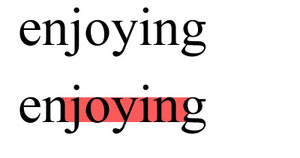
We need to mess around with the "joyi" bit. Here goes.
That's better. But the O and the Y and the I still leave awkward spaces. Can you see? And that is why 'enjoying' is a hard word to kern.
Good kerning
Good kerning not only looks great but aids legibility (which is linked to usability, and usability is a good thing).
One outlet where I see good kerning everyday, used to aid legibility and save space, is the tabloid press. (The only problem with the tabloid press is that it's really hard to find a front page that won't offend someone, somewhere. This was the least offensive one I could find).
Can you see how they used kerning on that 'Killer Flip Flops' headline?
I also raided my little design library at home to try and find examples of great kerning.
That's not such an easy thing to do, it's a bit like a surgeon looking for examples of great stitching. Anyway, here are some good examples illustrated with bad photos.
Here's some pages from a lovely book by/about Michael Jordan. (There's loads of good typography in general in this book.)
Neville Brody actually did some great kerning.
Pentagram, of course, are very good at kerning.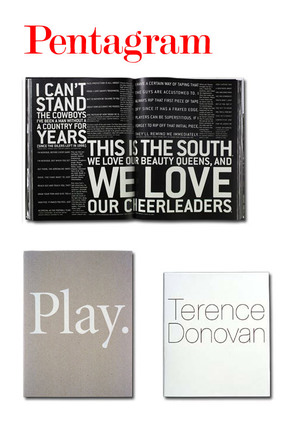
On another note and with reference to Professors Davies' other course my typography teacher on my Foundation course was facinated by how the kerning was always of a good standard on UK road signs.
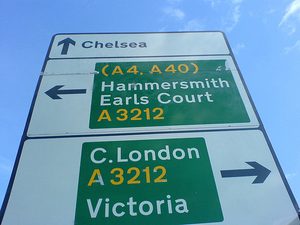
With massive thanks to Gaetan Lee.
I can now understand what he meant.
Posted at 23:52 in Things I've Learnt About Design, Typography | Permalink | Comments (16) | TrackBack (3)
Tags: kerning, typography
Jun 21, 2006
Painted Numbers
Posted at 15:30 in Seen and heard, Typography | Permalink | Comments (5) | TrackBack (0)
Jun 11, 2006
Is it only graphic designers?
Went for a nice walk this morning. Saw some great type painted on walls. Why don't people do this any more. It looks great.
We once had a fairly large building client who moved to a new building. They asked us to design a sign for the front and we suggested getting someone to paint on the brick wall. No, no, they said, that's too old fashioned.
Is it only graphic designers who think this looks great, or does everyone think it looks great?
Posted at 19:01 in Graphic Design Reviews , Seen and heard, Type Painted onto Walls / Stuff, Typography | Permalink | Comments (1) | TrackBack (0)
Recent Posts
- Years in the domain, like tears in the rain
- Printing is still too hard
- No innovation until everything works
- "They'll be dancing in the streets of Total Network Solutions this evening"
- It was a pleasure
- Public Digital has won a King’s Award for Enterprise in International Trade
- Kids describing fashion ads
- Art at Mount St Restaurant
- Post match squeeze
- Unbelievably tickets are still available
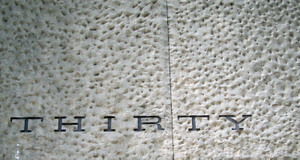
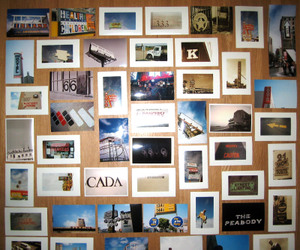

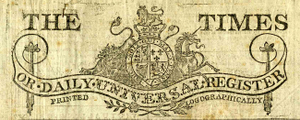
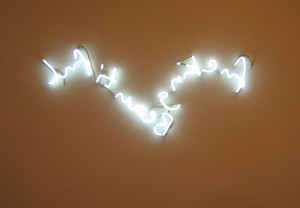
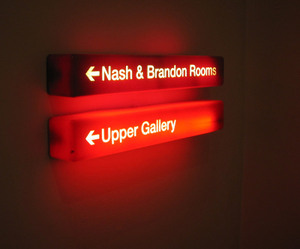
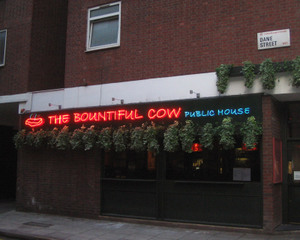

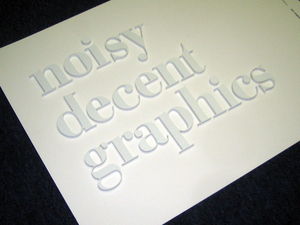
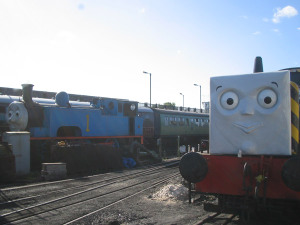

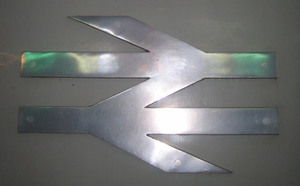
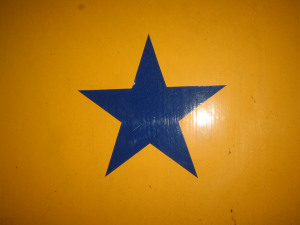
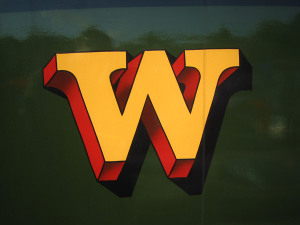
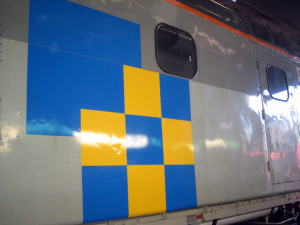
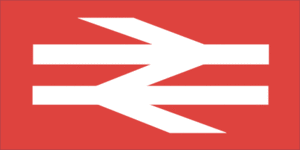

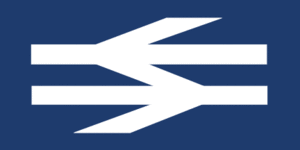

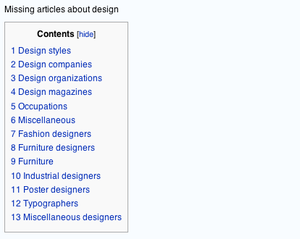
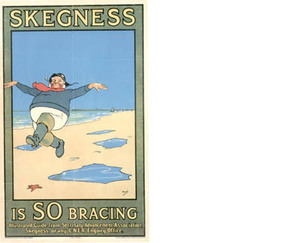
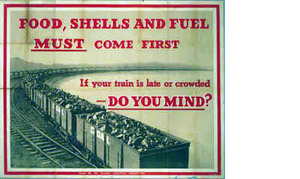
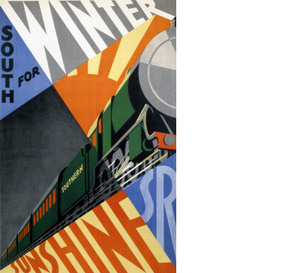
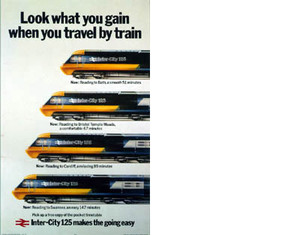

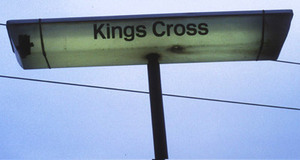
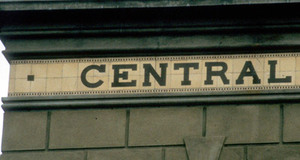
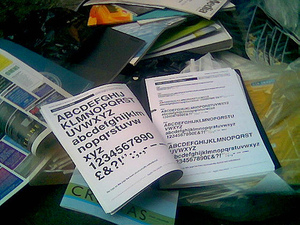
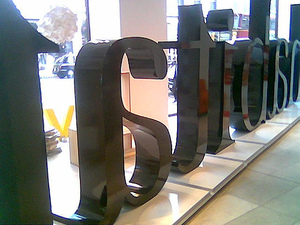
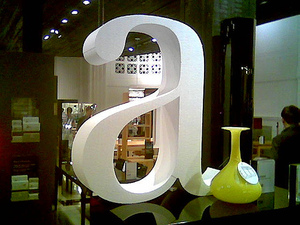
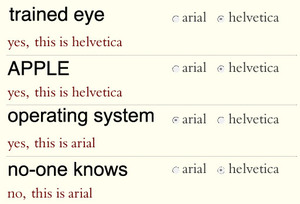

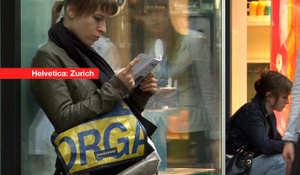
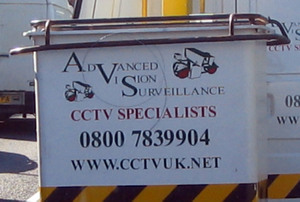
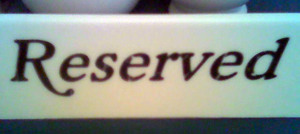
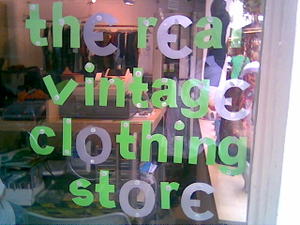
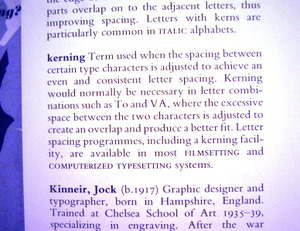
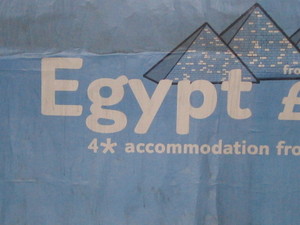
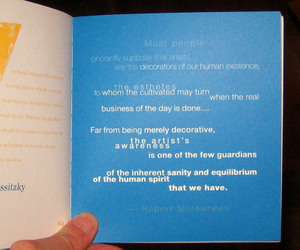
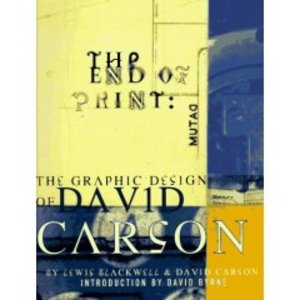

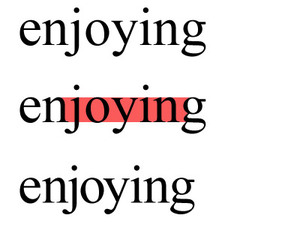
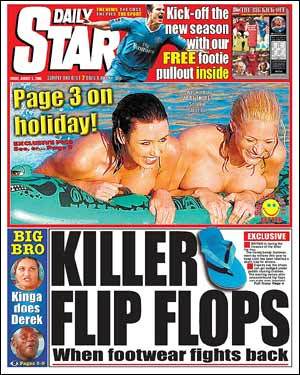
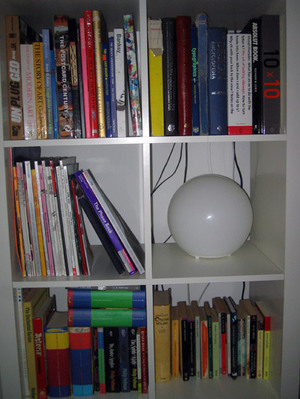
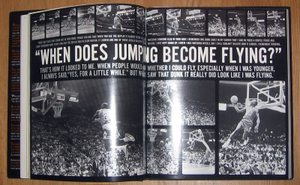
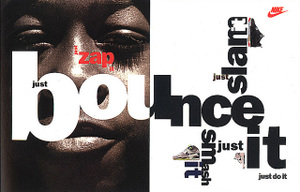
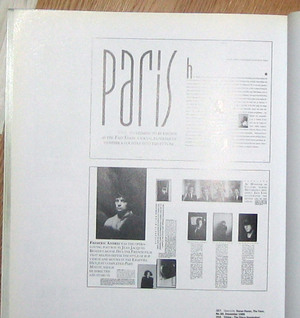
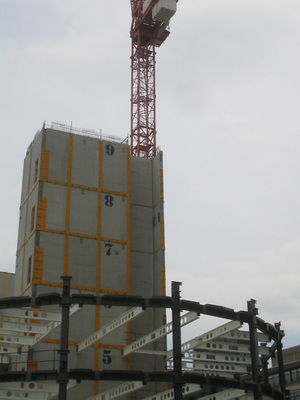

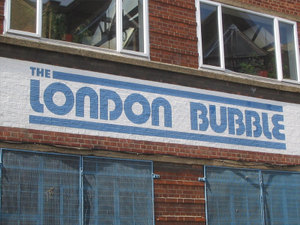
Recent Comments